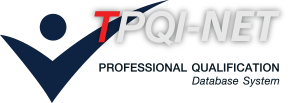หน่วยสมรรถนะ
Test and troubleshoot aircraft instrument systems and components.
สาขาวิชาชีพการบิน
รายละเอียดหน่วยสมรรถนะ
| 1. รหัสหน่วยสมรรถนะ | AVT-BQYC-264A |
| 2. ชื่อหน่วยสมรรถนะ | Test and troubleshoot aircraft instrument systems and components. |
| 3. ทบทวนครั้งที่ | / |
| 4. สร้างใหม่ |
|
ปรับปรุง |
|
| 5. สำหรับชื่ออาชีพและรหัสอาชีพ (Occupational Classification) | |
|
7232 Aircraft engine mechanics and fitters |
|
| 6. คำอธิบายหน่วยสมรรถนะ (Description of Unit of Competency) | |
| This unit of competency requires application of hand skills, standard trade practices and systems knowledge in the testing and troubleshooting of aircraft instrument and display systems and components during both scheduled and unscheduled maintenance on both fixed and rotary wing aircraft. Work may be completed individually or as part of a team. | |
| 7. สำหรับระดับคุณวุฒิ |
| 1 | 2 | 3 | 4 | 5 | 6 | 7 | 8 |
|---|---|---|---|---|---|---|---|
| 8. กลุ่มอาชีพ (Sector) | |
| 7232 Aircraft Mechanics | |
| 9. ชื่ออาชีพและรหัสอาชีพอื่นที่หน่วยสมรรถนะนี้สามารถใช้ได้ (ถ้ามี) | |
| N/A | |
| 10. ข้อกำหนดหรือกฎระเบียบที่เกี่ยวข้อง (Licensing or Regulation Related) (ถ้ามี) | |
| ICAO Doc 7192 / EASA Part 66 | |
| 11. สมรรถนะย่อยและเกณฑ์การปฏิบัติงาน (Elements and Performance Criteria) |
| หน่วยสมรรถนะย่อย (EOC) | เกณฑ์ในการปฏิบัติงาน (Performance Criteria) | รหัส PC (ตามเล่มมาตรฐาน) |
รหัส PC (จากระบบ) |
|---|---|---|---|
| 103407.01 Prepare for troubleshooting, Test/adjust instrument and display systems. |
103407.01.01 Able to interpret relevant maintenance documentation and modification status, including system defect/service difficulty reports, where relevant, to identify an unservice ability and prepare the aircraft and systems correctly in accordance with specified procedures for the application of power and system operation. |
103407.01.01 | 199849 |
| 103407.01 Prepare for troubleshooting, Test/adjust instrument and display systems. |
103407.01.02 Able to functionally test Instrument or display system is in accordance with specified procedures for evidence of serviceability or malfunction while observing all relevant work health and safety (WHS) requirements and perform system calibration or adjustments in accordance with specified procedures. |
103407.01.02 | 199850 |
| 103407.02 Troubleshoot instrument and display systems. |
103407.02.01 Able to use maintenance manual fault diagnosis guides and logic processes to ensure efficient and accurate troubleshooting to line replacement level and able to obtain specialist advice, where required, to assist with the troubleshooting process. |
103407.02.01 | 199853 |
| 103407.02 Troubleshoot instrument and display systems. |
103407.02.02 Able to locate Instrument or display system faults and the causes of the faults are clearly identified and correctly recorded in maintenance documentation, where required and able to determine fault rectification requirements to assist in planning the repair or adjustment. |
103407.02.02 | 199854 |
| 12. ความรู้และทักษะก่อนหน้าที่จำเป็น (Pre-requisite Skill & Knowledge) | |
|
103403 Inspect aircraft instrument systems and components |
|
| 13. ทักษะและความรู้ที่ต้องการ (Required Skills and Knowledge) | |
|
(ก) ความต้องการด้านทักษะ See Appendix A (ข) ความต้องการด้านความรู้ See Appendix A |
|
| 14. หลักฐานที่ต้องการ (Evidence Guide) | |
|
(a) Performance Evidence (b) Knowledge Evidence |
|
| 15. ขอบเขต (Range Statement) | |
|
This part allows for different work environments and conditions that may affect performance. Essential operating conditions that may be present (depending on the work situation, needs of the candidate, accessibility of the item, and local industry and regional contexts) are included. |
|
| 16. หน่วยสมรรถนะร่วม (ถ้ามี) | |
| N/A | |
| 17. อุตสาหกรรมร่วม/กลุ่มอาชีพร่วม (ถ้ามี) | |
| N/A | |
| 18. รายละเอียดกระบวนการและวิธีการประเมิน (Assessment Description and Procedure) | |
|
The assessment are based on combination of paper exams, interviewing, and practical demonstrations depending on the assessors’ judgement. |
|
